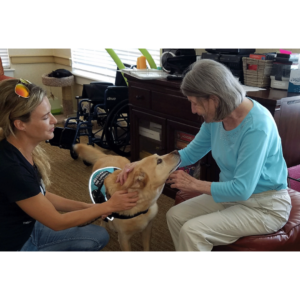How to Support Social Connections in Senior Care Settings

Nora O’Brien, executive director, Willow Towers Assisted Living and Willow Gardens Memory Care
Social connections are important for people of any age, but in senior care settings, they become even more essential. But for new residents, establishing those connections, whether with other residents or staff, can be challenging. Senior care organizations can play an important role in helping to support and facilitate those social connections.
Why Social Connections are So Important in Senior Care
Nora O’Brien, executive director of United Hebrew of New Rochelle’s Willow Towers Assisted Living and Willow Gardens Memory Care, explains that helping new residents to form those social connections is one of the most important things that her senior care communities do upon admission.
“Our residents need to feel connected to other people,” she says, highlighting that for some residents, the staff at these communities sometimes become their only family support. “Especially for some residents in memory care, the staff really give them a sense of purpose,” she says.
Senior care settings also play an essential role in helping to keep residents connected to their families. “One of the fears in assisted living is that ‘I will no longer be connected to my family,’ says O’Brien. “Really, that’s very far from the truth. Our families are welcome inside our buildings and we want them to feel that they’re still a presence in our residents’ lives. Many of our residents continue to go out and be a presence in their family’s lives.”
O’Brien also notes that staying social is important because it can help to keep residents healthy. Loneliness and social isolation are serious health risks, and can increase residents’ risk for other conditions, like heart disease, strokes, and more. “Helping to maintain social connections is critically important,” she says.
But fostering those social connections isn’t always easy. Haisam Sourchi, regional general manager of Alavida Lifestyles, explains that pandemic mandates and physical distancing have creates a major challenge to establishing and maintaining connections.
“In our fast-moving world, family members and friends have less time to visit, further impacting these social connections,” he adds. Seniors may also experience physical, sensory, and cognitive limitations that affect their mobility and make it more difficult for them to visit others.
O’Brien explains that social networks sometimes shrink as we age. “Many of our residents have experienced the loss of a spouse, the loss of friends, and people moving away to be closer to their children,” she says. “When we’re young, we have endless opportunities to become friends, through activities, clubs, first jobs, our children’s playground, and the PTA. Even later in life, we have new friendships that we make at work, and when our children grow, we might become close friends with their in-laws. We have to seek opportunities to make those connections when we age.”
Strategies to Support Social Connections for Residents
According to Sourchi, senior care organizations need to provide multiple opportunities for residents to build connections. “For example, plan out a monthly activity calendar and share it with the residents,” he says. “That way, residents can have something to look forward to and further strengthen their bonds with others.”
He also recommends that organizations incorporate technology corners and training as part of a resident’s continuous learning journey. “Alavida Lifestyles provides social media and tech training, as well as tools such as iPads to ensure our residents stay connected,” he says.
O’Brien recommends that organizations focus on helping residents to establish new connections as they’re moving in and leaving behind the familiarity of their home. “We pair each new member of our community with a resident ambassador,” she explains. The ambassadors have already lived in the community for a while, and O’Brien works to pair people who have similar interests.
“We spend a lot of time with the resident before they ever move in,” she says. “We go to their homes, they come to see us, and we spend time on the phone with their designated representative.” By learning details like where the resident grew up, went to school, and what they did for a living, the community can find an ambassador who they feel the new resident would click well with. “Our ambassadors do a great job with engaging new residents in the activities they’re interested in,” says O’Brien. “They’re very kind to new residents because they understand what it was like when they moved in.”
Quality programming also plays a role in resident engagement. O’Brien credits her communities’ wide array of programming “for any interest” as being important in helping residents to connect and engage. A sampling of those activities includes history lectures, fitness programs for any ability, cooking demonstrations, current events discussion groups, and social hours with local college students. “All of the activities are very fluid,” she says. “Every month there’s an activity meeting, and if you’re interested in canasta and we don’t have a group, we’ll make that for you.”
In addition to activities and holiday celebrations, Willow Towers Assisted Living and Willow Gardens Memory Care has another special way to foster connections. Serene, a resident therapy dog, provides emotional and physical support. She also helps to get conversations going. “One resident will hold her, one will pet her, and it will start a conversation about those animals who have made such a difference in our residents’ lives before they arrived here,” says O’Brien.
It’s essential for senior care organizations to support and foster social connections for its residents. Thankfully, there are many ways to accomplish this. Putting extra effort into getting to know residents, making their transition into the community smoother, and providing a selection of engaging activities can all help residents to create and maintain those important connections.

Paige Cerulli is a contributing writer to i Advance Senior Care.
Related Articles
Topics: Activities , Featured Articles , Operations , Resident Care , Risk Management , Training










